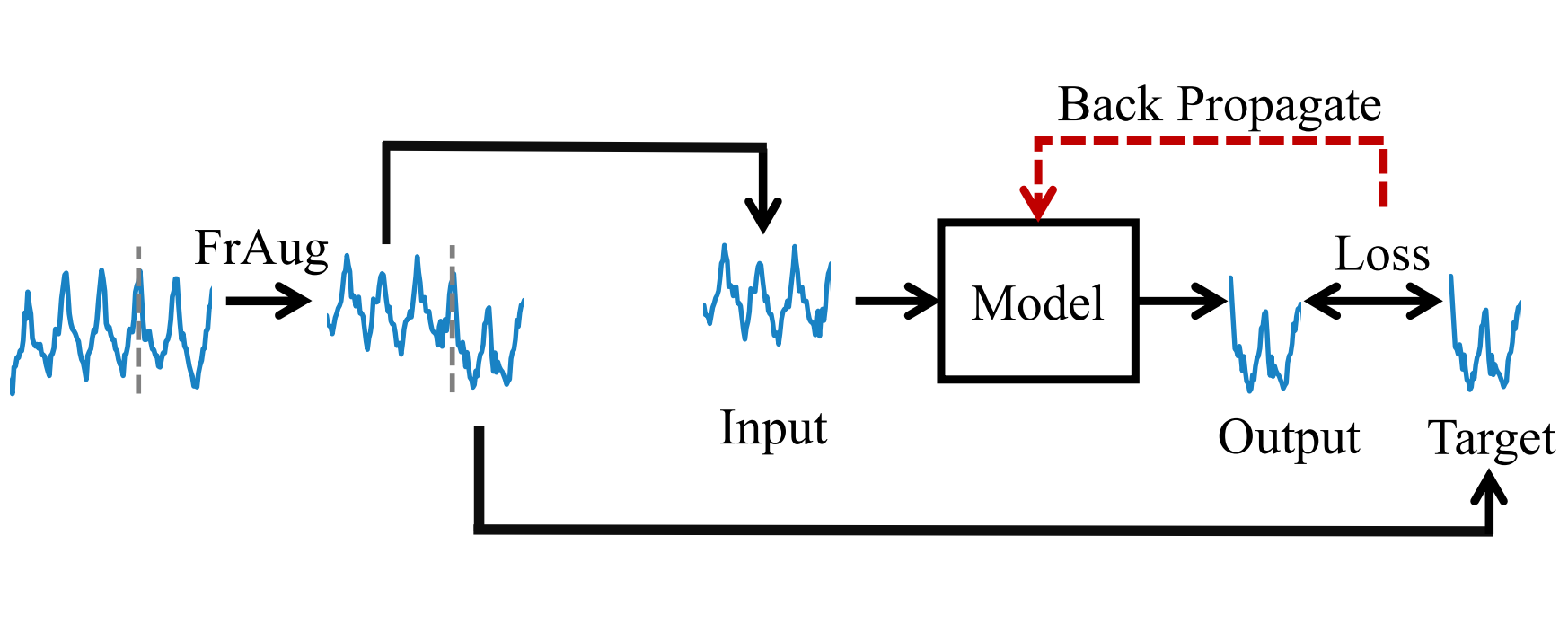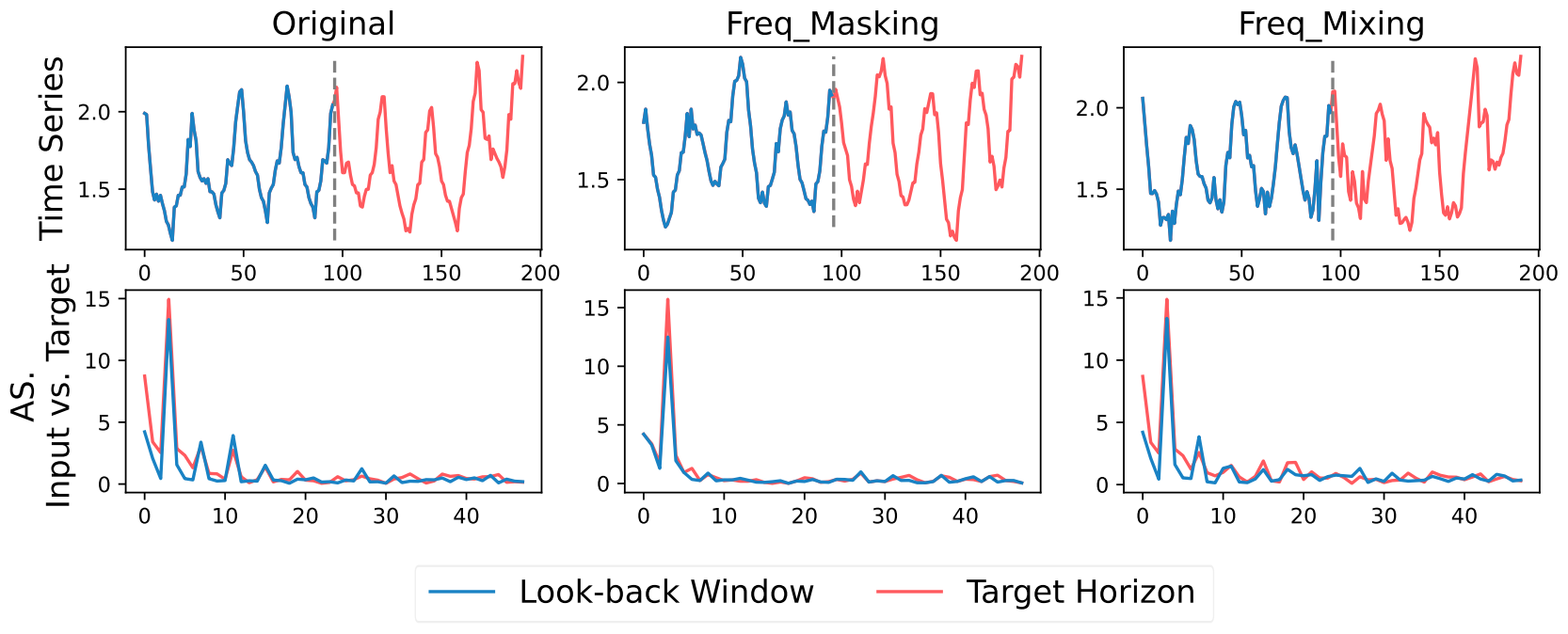FrAug:Frequency Domain Augmentation for Time Series Forecasting
Data augmentation (DA) has become a de facto solution to expand training data size for deep learning. With the proliferation of deep models for time series analysis, various time series DA techniques are proposed in the literature, e.g., cropping-, warping-, flipping-, and mixup-based methods. However, these augmentation methods mainly apply to time series classification and anomaly detection tasks. In time series forecasting (TSF), we need to model the fine-grained temporal relationship within time series segments to generate accurate forecasting results given data in a look-back window. Existing DA solutions in the time domain would break such a relationship, leading to poor forecasting accuracy.
To tackle this problem, this paper proposes simple yet effective frequency domain augmentation techniques that ensure the semantic consistency of augmented data-label pairs in forecasting, named FrAug. We conduct extensive experiments on eight widely-used benchmarks with several state-of-the-art TSF deep models. Our results show that FrAug can boost the forecasting accuracy of TSF models in most cases. Moreover, we show that FrAug enables models trained with 1\% of the original training data to achieve similar performance to the ones trained on full training data, which is particularly attractive for cold-start forecasting. Finally, we show that applying test-time training with FrAug greatly improves forecasting accuracy for time series with significant distribution shifts, which often occurs in real-life TSF applications.
1. Illustration of the training process with FrAug.

2. Visualization results of FrAug on 1000∼1192 frames of ‘OT’ channel of ETTh1 dataset.

3. Illustration of the proposed augmentation methods.

4. Visualization of the forecasting curves of different methods.

5. Visualization of the forecasting curves of different methods in every part of the dataset under test-time training policy.

6. Visualization of the last channel of the ILI dataset. Distribution shifts happen at the middle and the end of the dataset.

@article{chen2023fraug,
title={FrAug: Frequency Domain Augmentation for Time Series Forecasting},
author={Chen, Muxi and Xu, Zhijian and Zeng, Ailing and Xu, Qiang},
journal={arXiv preprint arXiv:2302.09292},
year={2023}
}